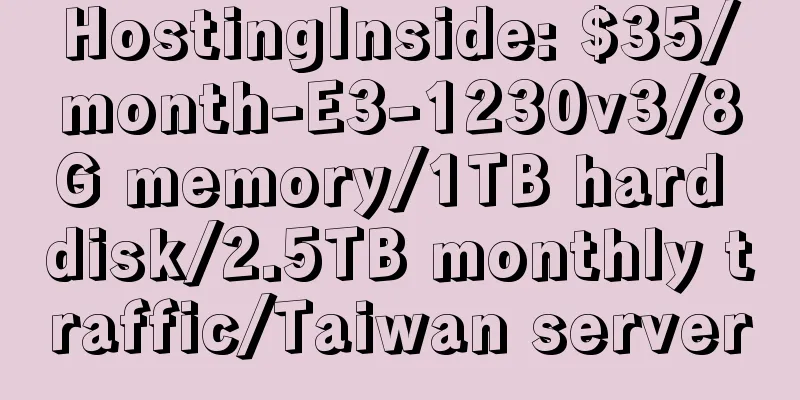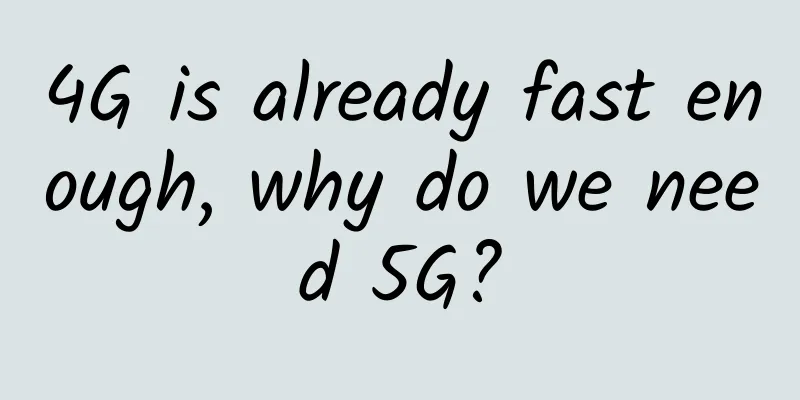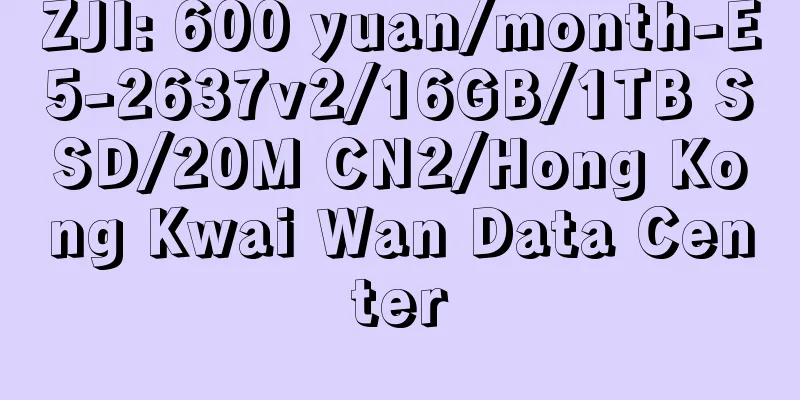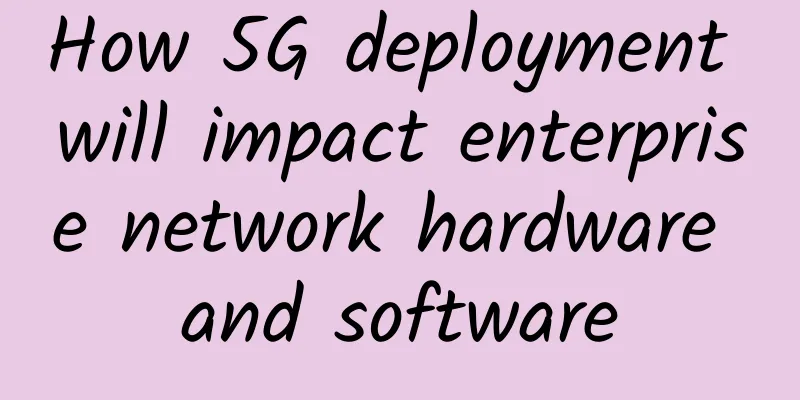Broadband upload speeds are seriously unequal, but China Unicom, China Telecom, and China Mobile are not that bad.
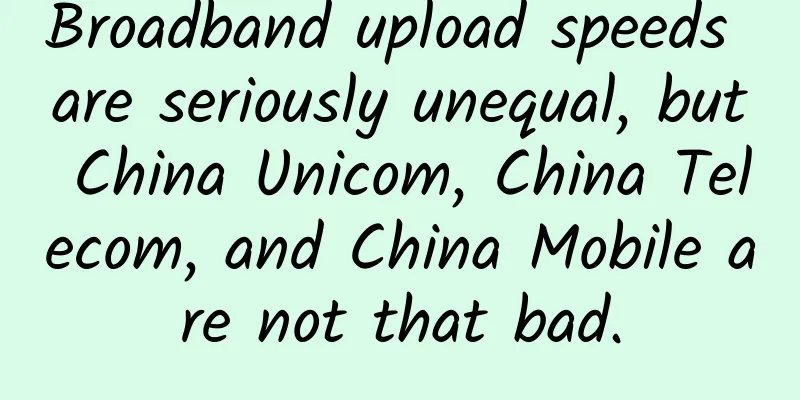
|
In recent years, with the continuous advancement of mobile and fixed Internet speed increase and fee reduction, the corresponding package charges have also dropped significantly, and long-distance calls and roaming charges have become history, and data roaming will also become history after July 1. These are all real changes that we can see; but for fixed Internet (broadband Internet access), everyone has only seen speed increases and fee reductions, from 1M to 2M, then from 4M to 8M, and now to 100M fiber-to-the-home. The broadband speed we see is indeed increasing, but the main increase is the broadband download speed, and no one cares about the upload speed.
Some people may say that it is enough if the download speed is increased, but have you ever thought about the embarrassing scene when you and your family chat by voice or video? The voice and video signal is intermittent, and you think it is because the signal is bad? This is part of the reason, but more of it is the insufficient upload bandwidth, which leads to network lag. The upload rate is seriously unequal to the download rate, and most of them stay at an ultra-low level of 2-4 megabits. There has never been any detailed official statistics, which is seriously lagging behind the times in the current trend of social sharing. Now the Ministry of Industry and Information Technology has finally started to solve this pain point. At the press conference on the development of the industrial communications industry in the first quarter of 2018, Wen Ku said: In response to users' concerns about uplink speed, this work will be promoted this year, and relevant uplink speed standards will be issued in the first half of the year. Broadband upload speed is seriously unequal Before talking about inequality, we must first understand two terms: Internet speed and bandwidth. Internet speed refers to how fast you can run on the Internet highway: the time it takes for your signal to reach the server, for the server to respond, and then return the data. So this Internet speed is actually the distance and time it takes for your data to reach the server and return to your device. Another thing to look at is the telecom operator. The PING value (PING value is a value used to describe network latency, in milliseconds. The lower the PING value, the lower the network latency and the better the network quality) in South Korea is all below 20ms. In comparison, our latency is relatively high. The ping of many servers is around 100-200ms, and the cross-network latency is even more terrifying. This is mainly because our country is too large, and there are problems with operators such as China Unicom and China Telecom (basically it has nothing to do with your computer).
Bandwidth is the amount of information allowed to run on the Internet highway: it is the maximum value of data that the telecommunications equipment sets for you to transmit per unit of time. The bandwidth unit provided by the telecommunications operator's IDC room is bps (or b/s), where b=bit. We usually use Byte (byte) 1 Byte=8 bits in our computers, so the bandwidth of 2M is: 2/8=0.25MB/S 0.25Mb*1024=256Kb, which is what we usually call download speed (2M is 2Mbps=256KB/S), which means that the telecommunications operator allows us to get a maximum of 256KB of data per second. Here, the editor summarizes a broadband calculation formula: several megabytes of bandwidth × 1024÷8=several KB/s. What we are going to talk about today is the issue of bandwidth. The theoretical transmission speed of optical fiber is indeed very fast, but it does not mean that any optical fiber can achieve this speed. Just as the roads in Germany are flat and thick without speed limits, the highways in Bhutan are not as good as the village roads in China. The factors that affect the performance of roads are the supporting facilities, and optical fibers also have requirements for wire diameter and transparency. Of course, in simple terms, the theoretical bandwidth of optical fiber is still very large, but the factors that affect "data flow" are not only the width of the road, but also the operating efficiency of switches and routers. In actual technology, our communication cables are optical fibers with glass fibers as the core, but the data transceiver devices in communication equipment are also circuit-based integrated circuits, which do not have the ability to directly process optical signals. For the current mainstream GOPN (GPON is the latest broadband PON standard developed by FSAN 'Full Service Access Network' organization since the late 1990s) optical broadband, the uplink transmits data through TDMA (time division multiplexing). The uplink is divided into different time slots, and each ONU is allocated an uplink time slot according to the downstream upstream bandwidth map field, so that all ONUs can send their data in a certain order, and there will be no conflict for time slots. In short: the broadcast mode is adopted between downstream users, the duplex mode is wavelength division duplex, and the multiple access in the upstream direction adopts time division multiple access. The optical path from the operator's OLT (optical line terminal) equipment is divided into many parts through a passive optical splitter, and the common number is 64 parts. These 64 optical fibers are the user's home optical fibers. The same OLT device uses broadcast transmission between downstream users. The user's optical modem only decodes its own part and discards the part that is not its own without processing. In the upstream direction, time is used to distinguish different users under the same OLT. The optical modem is allowed to send data only at its own transmission time.
A key device here is the passive optical splitter. Passive means no power supply. As we know, light is an analog signal, and in optical fiber communication, digital information is carried by analog light. Because the passive optical splitter does not amplify or decode the optical signal, it only changes one optical signal into multiple channels, such as 64 channels, through the principle of physical optics. The information carried by these 64 channels is exactly the same. Then these 64 optical channels enter different users' homes. The user's optical modem will convert the optical signal from analog to digital electrical signal. After the conversion into digital binary information, it will be compared with its own hardware registration information and only decode its own part. In the upstream direction, OLT can detect the line delay and notify the optical modem under the same OLT, calculate and notify the upstream transmission time of each optical modem. At any time, there is only one optical modem under the same OLT sending data, and other optical modems on the same optical path are in silent state. Because of this special structure, the resources of upstream and downstream users are actually different, so the current optical bandwidth is generally much larger in the downstream than in the upstream. If a dedicated line is pulled, it can be consistent. There are two reasons: First, DSL and PON are asymmetric, with downstream being faster than upstream (so theoretically the user's upstream speed is slower than the downstream speed, and speed limits are necessary to limit P2P and other applications, so that a user's upstream speed is not too high and affects other users). Second, it is the planning of large LANs. China Unicom, China Telecom and China Mobile are not that bad. According to my understanding, the operator will determine your Internet speed through double speed limits, one is the account, and the other is the port of the AD node machine. For example, if you apply for 2M, then your account and node machine port will be limited to 2M. Usually, due to different routes of users connecting to routers, line quality loss, server load, etc., the download speed is often lower than 256KB/S, which is why there is a saying of fake broadband. In addition, for various reasons, some operators sometimes slightly increase the speed limit. For example: if you apply for 16M, the telecom operator may limit your speed to 18M to offset various losses, so that you can have a peak experience of 16M, but not all of them. There is another situation where telecom operators claim to have "100M fiber", but in fact, multiple people share one cable, just like multiple cars sharing a highway. If the number of users (vehicles) is too large, even the widest road (fiber) will be overcrowded. This situation is very common in many companies (everyone in a company uses one network cable). It is very comfortable when no one is using it, but it is very congested during working hours. In addition, because the IDCs of many websites are in the computer rooms of different operators, 70% of the hosts on the Internet are in the telecom computer rooms. When China Unicom network accesses the IDC computer room of Telecom, the speed will also be limited. In the ADSL era more than a decade ago, due to the limitation of xDSL technology, the upload rate was much lower than the download rate. Now, in addition to ADSL, there are also access methods such as FTTB (Internet cable to the home) and FTTH (fiber to the home). FTTB (Internet cable to the home) and FTTH (fiber to the home) technically support symmetrical upstream and downstream rates.
Since most users rarely upload, and even if they do, they only upload occasionally, the upload rates of various access methods still follow the settings of the ADSL era, which is much lower than the download rate. Because traffic has a cost, although general broadband is not priced according to traffic, traffic has a cost. Now broadband follows the settings of the ADSL era, and prices are generally set according to download rates. If the settings of the ADSL era are not followed, then there will be one more factor in broadband pricing, which is the upload rate. So how should the upload rate be priced? There are two possibilities: (1) First, the higher the upload rate, the higher the price So the question is: How many users know how much upload bandwidth they need when they apply for broadband? If you give them a higher bandwidth, they will definitely think that Telecom is too expensive. If you give them a lower bandwidth, they may find that the upload speed is too slow one day when they need to upload, and they will think that Telecom is cheating... (2) Second, the price remains unchanged, and the upload rate is determined by the user's access method. The upload rate is based on the amount that can be supported, and does not exceed the download rate. Then the question arises again: there are still many old ADSL users. When they see that new FTTB and FTTH users spend the same amount of money and enjoy an upload speed that is N times higher than their own, some people will definitely make a fuss and ask for a refund or to switch to fiber. Refunding is almost impossible for telecom companies, and fiber construction is not that simple. For example, they will definitely not consider construction in remote mountainous areas or areas that are about to be demolished; in urban communities, they will not build if the property management charges a high price or even a sky-high entry fee, and can only stare blankly. It will take several months to build even if the conditions are met. In conclusion: In fact, in many cases, it is not the operator's restrictions, but the current fiber-to-the-home technology. The current bandwidth level is the result of a balance between technology and cost. At present, the port transmission speed of backbone network equipment is generally 100G, and the uplink port transmission speed of the access network (GPON for example) is generally GE. The higher the transmission speed of the transmission equipment, the more expensive it is. A backbone network device can easily cost millions, which is very expensive. Therefore, the operator must limit the network speed according to the bandwidth you purchase. Measures such as download speed limit/upload speed limit can be regarded as a means of market segmentation, charging different fees to users with different traffic sizes. Therefore, as long as the bandwidth of the general public can meet the mainstream application needs, it will be fine. Please pay extra for special needs. The cost of a complete N*N network is too high (only special organizations can afford it), so the Internet is a tree-like static pipeline, and the backbone network is shared. Without bandwidth restrictions, network planning and optimization cannot be done. People are greedy and tend to maximize their profits, and the result is network congestion. Relatively speaking, the behavior of large state-owned telecom operators (China Unicom, China Telecom, and China Mobile) is not that bad. Through reasonable network planning (single-user speed limit, load balancing), the bandwidth rate that should be available at ordinary times can be basically guaranteed. |
<<: Don't call Riverbed just a WAN optimization company anymore. It's become something more.
Recommend
Juniper Networks 2017 Annual Conference grandly held, focusing on telecom and OTT markets
[51CTO.com original article] In February 2017, th...
How secure is HTTPS? A primer on the protocol that protects much of the web
From entertainment sites to online banking sites,...
Thanks to the broadband technician's reminder, I know that the router should be "turned off regularly". No wonder the WiFi is slow and slow.
Nowadays, wireless WIFI networks are available in...
How edge computing and 5G can drive business applications
Over the past decade, advances in cloud computing...
What is the most important thing in digital transformation? Service! ICT services must also be popular in the industry!
51CTO conducts dozens of procurement surveys for ...
Where is the future of 5G private networks?
The 4G and 5G networks that you usually use to ma...
Single Pair Ethernet (SPE) and its applications
Single Pair Ethernet (SPE) is a new Ethernet tech...
Casbay: Malaysia/Singapore VPS monthly payment starts from $11.59, 100M unlimited traffic
The Casbay domain name has been registered since ...
Global Private 5G Network, Taking Enterprise to the Next Level!
A recent analysis by Frost & Sullivan shows t...
Can't tell the difference between Wi-Fi and WLAN? Stop confusing them
Usually, we connect to WiFi when we surf the Inte...
NetCloud: San Jose CN2 GIA line VPS monthly payment starts from 29 yuan, with 15 extra days for the first month
Wangyun (wangyun.net) is a Chinese hosting provid...
Baidu can't stand it
Lao Lao Noodles Source: https://www.nowcoder.com/...
Is IT operation the next outlet for IT operation and maintenance?
With the development and popularization of popula...
CloudSilk 2nd Anniversary 20% off: San Jose AS9929/Germany AS9929/Hong Kong CMI as low as 128 yuan/year
CloudSilk.io has launched a special promotion for...
iWebFusion: Starting from $45/month E3-1230v2/16GB/2TB/10TB@1Gbps, multiple data centers in Los Angeles and other places
iWebFusion (iWFHosting) is a site of H4Y, a forei...

